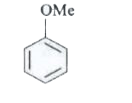Which of the following compounds can exhibit tautomerism?
C6H5CHO
C6H5−O∣∣C−CMe3
C6H5−O∣∣C−CH2−O∣∣C−H
C6H5−O∣∣C−C6H5
The correct Answer is:C
To determine which of the given compounds can exhibit tautomerism, we need to analyze each compound for the presence of alpha hydrogens. Tautomerism typically occurs in carbonyl compounds that have at least one alpha hydrogen adjacent to the carbonyl group. Here’s a step-by-step solution:
Step 1: Understand Tautomerism
Tautomerism is a chemical phenomenon where a compound can exist in two interconvertible forms, typically involving the migration of a hydrogen atom and a shift of a double bond. The most common type of tautomerism in carbonyl compounds is keto-enol tautomerism.
Step 2: Identify the Compounds
The options provided are:
- A: C6H5CHO (Benzaldehyde)
- B: C6H5C(=O)C(CH3)3 (A ketone with tert-butyl group)
- C: C6H5COCH2COH (A diketone)
- D: C6H5COC6H5 (Benzophenone)
Step 3: Analyze Each Compound for Alpha Hydrogens
Option A: C6H5CHO (Benzaldehyde)
- Structure: C6H5-CHO
- Analysis: The carbonyl carbon (C=O) has no alpha hydrogens because the adjacent carbon is part of the phenyl group (C6H5).
- Conclusion: Does not exhibit tautomerism.
Option B: C6H5C(=O)C(CH3)3 (A ketone with tert-butyl group)
- Structure: C6H5-C(=O)-C(CH3)3
- Analysis: The carbonyl carbon is adjacent to a tert-butyl group, which has no alpha hydrogens.
- Conclusion: Does not exhibit tautomerism.
Option C: C6H5COCH2COH (A diketone)
- Structure: C6H5-CO-CH2-COH
- Analysis: This compound has two carbonyl groups. The CH2 group adjacent to the first carbonyl (C=O) has two alpha hydrogens.
- Conclusion: Exhibits tautomerism.
Option D: C6H5COC6H5 (Benzophenone)
- Structure: C6H5-CO-C6H5
- Analysis: The carbonyl carbon is adjacent to two phenyl groups, both of which do not have alpha hydrogens.
- Conclusion: Does not exhibit tautomerism.
Step 4: Final Conclusion
Based on the analysis, the only compound that can exhibit tautomerism is Option C: C6H5COCH2COH.
Summary of Results:
- Option A: No tautomerism
- Option B: No tautomerism
- Option C: Exhibits tautomerism
- Option D: No tautomerism
Tautomerism is a chemical phenomenon where a compound can exist in two interconvertible forms, typically involving the migration of a hydrogen atom and a shift of a double bond. The most common type of tautomerism in carbonyl compounds is keto-enol tautomerism.
The options provided are:
- A: C6H5CHO (Benzaldehyde)
- B: C6H5C(=O)C(CH3)3 (A ketone with tert-butyl group)
- C: C6H5COCH2COH (A diketone)
- D: C6H5COC6H5 (Benzophenone)
- Structure: C6H5-CHO
- Analysis: The carbonyl carbon (C=O) has no alpha hydrogens because the adjacent carbon is part of the phenyl group (C6H5).
- Conclusion: Does not exhibit tautomerism.
- Structure: C6H5-C(=O)-C(CH3)3
- Analysis: The carbonyl carbon is adjacent to a tert-butyl group, which has no alpha hydrogens.
- Conclusion: Does not exhibit tautomerism.
- Structure: C6H5-CO-CH2-COH
- Analysis: This compound has two carbonyl groups. The CH2 group adjacent to the first carbonyl (C=O) has two alpha hydrogens.
- Conclusion: Exhibits tautomerism.
- Structure: C6H5-CO-C6H5
- Analysis: The carbonyl carbon is adjacent to two phenyl groups, both of which do not have alpha hydrogens.
- Conclusion: Does not exhibit tautomerism.
Based on the analysis, the only compound that can exhibit tautomerism is Option C: C6H5COCH2COH.
- Option A: No tautomerism
- Option B: No tautomerism
- Option C: Exhibits tautomerism
- Option D: No tautomerism
Similar Questions
Knowledge Check
Which of the following compounds can exhibit enantiomerism?
A3-hydroxy propanoic acidB3-hydroxy butanoic acidC4-hydroxy butanoic acidDnone of theseWhich of the following compounds will exhibit tatutomerism?
A B
B C
C D
D
Which of the following compounds can exhibit geometrical isomerism?
A B
B C
C DC2H5−CH=CH−CH=CH
DC2H5−CH=CH−CH=CH
Given
Which of the given compounds can exhibit tautomerism?
View SolutionWhich of the following compounds exhibits stereoisomerism?
View SolutionWhich of the following compounds exhibits stereoisomerism?
View SolutionWhich of the following compounds can exhibit geometrical isomerism?
View SolutionWhich of the following compounds exhibit optical isomerism?
View Solution


